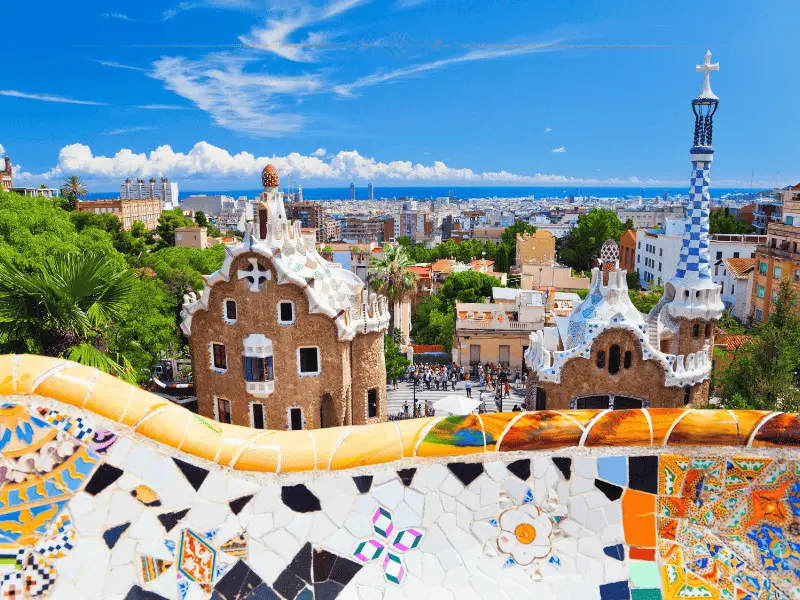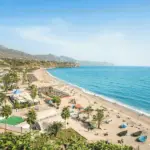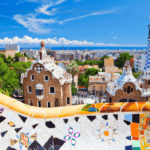Spain is making it easier than ever for residents and visitors to take advantage of its generous public transportation subsidies. In a significant update to the country’s free transit program, Spanish authorities have announced a reduced trip requirement and streamlined refund processes for the May-June 2025 period, creating new opportunities for budget-conscious travelers throughout the country.
The Program at a Glance: What’s Changed?

The Spanish Ministry of Transport has implemented several key changes to its popular free transit initiative. Most notably, passengers will now only need to complete eight journeys during the May-June period to qualify for a full deposit refund, down from the previous requirement of sixteen trips. This modification makes the program accessible to a broader range of travelers, including those who may not commute daily but still use public transportation regularly.
This two-month period represents the final phase of the current free travel system before a revised program takes effect on July 1, 2025. Until then, eligible passengers can continue to enjoy complimentary travel on Cercanías (local trains), Media Distancia (medium-distance rail services), and intercity coaches throughout Spain, provided they meet the updated requirements.
Deposit System Explained
The deposit structure remains unchanged from previous iterations of the program. Travelers must pay a refundable deposit when obtaining their multi-trip passes, with the amount varying by service type:
For Cercanías (local commuter trains) and Rodalies (the equivalent service in Catalonia), passengers pay a €10 deposit.
Medium-distance rail services (Media Distancia) require a €20 deposit.
Intercity coach services operated on state-subsidized routes require deposits ranging from €20 to €65, depending on the specific fare and route.
These deposits serve as a commitment mechanism, encouraging regular use of public transportation. The key difference in the updated program is that these deposits are now fully refundable after completing just eight journeys during the May-June period, rather than the sixteen previously required.
How Refunds Work
The refund process varies depending on how passengers paid their initial deposit:
For those who paid by credit or debit card, refunds are processed automatically once the system verifies completion of the required eight trips. There’s no need to submit additional paperwork or make special requests.
Cash-paying passengers must take an additional step: they need to visit the station where they purchased their pass and request a refund before the end of August 2025. Failing to claim the refund within this timeframe will result in forfeiture of the deposit.
It’s worth noting that if a traveler doesn’t complete the minimum eight journeys during the May-June period, the deposit is considered “compensation” for the subsidized travel and will not be refunded. This policy encourages consistent use of the transit system while still offering significant savings compared to purchasing individual tickets.
Eligibility and Coverage
The free transit program covers a wide range of public transportation options throughout Spain, making it particularly valuable for daily commuters, frequent travelers, and tourists planning to explore multiple regions of the country.
Cercanías and Rodalies Services
Cercanías trains serve as the backbone of commuter rail networks in most major Spanish cities, including Madrid, Valencia, Seville, and Bilbao. In Catalonia, these commuter services are known as Rodalies. These trains connect city centers with surrounding suburbs and nearby towns, making them essential for daily commuters.
The passes provide unlimited travel on selected routes within these networks during the May-June period. Passengers must specify their preferred routes when applying for the pass, as they’re not valid for the entire network.
Media Distancia Services
Media Distancia trains connect cities and towns that are typically between 60 and 300 kilometers apart. These services are particularly useful for those who live in one city but work or study in another, as well as for weekend travelers exploring neighboring regions.
As with Cercanías passes, Media Distancia passes are route-specific, so travelers need to indicate their regular journey when applying. The passes can be used for unlimited travel on the selected route during the two-month period.
Intercity Coach Services
The program also covers intercity coach services operated on state-subsidized routes. These buses often serve areas not reached by the rail network or provide alternative connections between cities and towns.
Applications for free multi-trip bus passes operate on a different timeline than train passes. According to the Ministry of Transport, applications for coach passes for the May-June period will open later in April 2025.
Regional Variations and Special Cases
While the program is national in scope, there are some regional variations worth noting:
Asturias and Cantabria
Travelers in the northern regions of Asturias and Cantabria enjoy even more generous benefits. In these regions, both Cercanías and Narrow Gauge train travel remain completely free throughout 2025, with no deposit required. This extended program reflects the importance of public transportation in these mountainous regions, where road travel can be challenging, especially during winter months.
Other Regional Programs
Several autonomous communities in Spain have implemented their own complementary programs to enhance the national initiative. These regional programs sometimes extend the benefits to additional transportation services not covered by the national scheme, such as urban buses or metro systems.
Travelers are advised to check with local transportation authorities in their destination regions to learn about any additional benefits they might be eligible for beyond the national program.
How to Apply
Obtaining a free multi-trip pass is straightforward, with both online and in-person options available:
Online Application
For most train services, passes can be applied for through Renfe’s official website or mobile application. The online process requires creating an account (if you don’t already have one), selecting your preferred routes, and paying the refundable deposit.
Some regional transportation authorities also offer their own online application platforms, which may be more convenient for those seeking passes for regional services.
In-Person Application
Passes can also be obtained at train stations throughout the country. Ticket offices and self-service machines at most stations are equipped to process applications for free multi-trip passes.
For intercity coach services, passes are typically available at bus stations or through the operating company’s ticket offices.
Regardless of which method you choose, you’ll need to provide basic personal information and specify the routes you intend to use regularly. You’ll also need to pay the refundable deposit, which will be returned after you complete the required eight journeys.
Planning Your Travel to Maximize Benefits
To get the most out of the free transit program, consider these strategies:
Route Selection
When applying for a pass, carefully consider which routes you’ll use most frequently. Remember that passes are route-specific, so choose connections that align with your regular travel patterns.
If you frequently travel between several different locations, you might need to obtain multiple passes to cover all your regular routes.
Tracking Your Journeys
Keep track of how many journeys you’ve completed to ensure you reach the minimum requirement for a refund. Most passes come with a journey counter that updates each time you validate your ticket, but it’s still wise to maintain your own record as a backup.
For train services, each validation counts as one journey, regardless of transfers within the same service type. For example, if your Cercanías journey involves changing trains within the Cercanías network, it still counts as a single journey.
Timing Your Application
Since the free transit program covers May and June 2025, it’s advisable to apply for your pass in late April to ensure you can use it from the very beginning of the eligible period. This gives you the full two months to complete your eight required journeys.
Background and Future of the Program
The free transit initiative was originally introduced as a temporary measure to help Spaniards cope with rising living costs and to encourage sustainable transportation choices. However, its popularity has led to multiple extensions and refinements.
The current phase, with its reduced trip requirement, represents a transition to a new system scheduled to begin on July 1, 2025. While details about the future program haven’t been fully disclosed, transportation officials have indicated that it will maintain the spirit of the current initiative while incorporating lessons learned from previous phases.
The program aligns with Spain’s broader environmental goals, as increasing public transportation usage helps reduce carbon emissions and alleviate traffic congestion in urban areas. It also supports tourism, making it more affordable for visitors to explore multiple destinations within the country.
Practical Tips for First-Time Users
If you’re new to Spain’s public transportation system or haven’t used the free transit program before, here are some practical tips to help you navigate the process:
Documentation Requirements
While the application process is generally straightforward, you may need to provide identification when applying for your pass, especially if doing so in person. A passport or national ID card is typically sufficient.
Understanding Validation
All passes must be validated at the beginning of each journey, typically by scanning them at designated validation points in stations or on vehicles. Failure to validate your pass may result in fines, even though the pass itself is free.
For Cercanías and Media Distancia services, validation points are usually located at station entrances or platforms. On buses, validation typically occurs when boarding.
Service Frequency Considerations
When planning your travel, be aware that service frequency varies significantly between different routes and times of day. Cercanías trains in major cities often run every 10-15 minutes during peak hours, while Media Distancia services might operate only a few times per day on certain routes.
Checking schedules in advance is particularly important for less frequently served routes or when traveling on weekends and holidays, when service patterns often change.
Combining with Other Transportation Options
The free transit program can be combined with other transportation options to create comprehensive travel solutions. For example, many travelers use Cercanías trains to reach city centers, then switch to local metro or bus services (which may not be covered by the national program) for their final destinations.
Some cities offer integrated transportation cards that can be used across multiple services, making transfers more convenient.
Who Benefits Most from the Program?
The reduced trip requirement makes the program particularly valuable for several groups:
Regular Commuters
Those who travel to work or school several times per week remain the primary beneficiaries. Even with the reduced requirement of eight trips over two months, regular commuters will easily qualify for the full refund of their deposit.
Weekend Travelers
The reduced trip requirement now makes the program accessible to weekend travelers who might visit nearby cities or towns on a regular but less frequent basis. Four weekend round-trips over the two-month period would be sufficient to meet the requirement.
Tourists on Extended Stays
Visitors spending more than a week in Spain can now realistically benefit from the program if they plan to explore multiple locations using public transportation. This makes Spain an even more attractive destination for budget-conscious travelers.
Remote Workers with Flexible Schedules
Those who don’t need to commute daily but still travel regularly for work or personal reasons can now more easily qualify for the program, making it relevant to a broader segment of the population in an era of increasing remote work flexibility.
Environmental and Social Impact
Beyond its immediate financial benefits for travelers, the free transit program serves broader societal goals:
Carbon Emission Reduction
By encouraging public transportation use, the program contributes to reducing carbon emissions. A single fully occupied train can replace hundreds of individual car journeys, significantly lowering the environmental impact of travel.
Traffic Congestion Relief
Major Spanish cities like Madrid and Barcelona struggle with traffic congestion. By incentivizing public transportation use, the program helps alleviate this problem, potentially reducing commute times even for those who continue to drive.
Accessibility and Social Equity
The program makes transportation more affordable for everyone, including lower-income individuals and families who might otherwise struggle with transportation costs. This enhances mobility across social and economic divides.
Regional Development
By making it more affordable to travel between cities and regions, the program supports more distributed economic development, allowing people to live in smaller towns while working or studying in larger cities.
A Simplified Approach to Free Transit
Spain’s updated free transit program for May-June 2025 represents a significant enhancement to an already popular initiative. By reducing the trip requirement from sixteen to eight journeys, the Ministry of Transport has made the program accessible to a wider range of travelers while maintaining its core benefits.
The program continues to offer substantial financial savings for regular travelers while promoting sustainable transportation choices. With its simplified refund process and broad coverage of transportation options, it stands as one of Europe’s most progressive public transportation initiatives.
Whether you’re a daily commuter, a weekend explorer, or a visitor discovering Spain’s diverse regions, the free transit program provides an excellent opportunity to travel economically while reducing your environmental footprint. Just remember to plan your routes, track your journeys, and complete at least eight trips during the May-June period to qualify for your deposit refund.
As Spain transitions to a new system in July 2025, the current program’s success demonstrates the potential for innovative public transportation policies to create positive impacts for both individual travelers and society as a whole.




